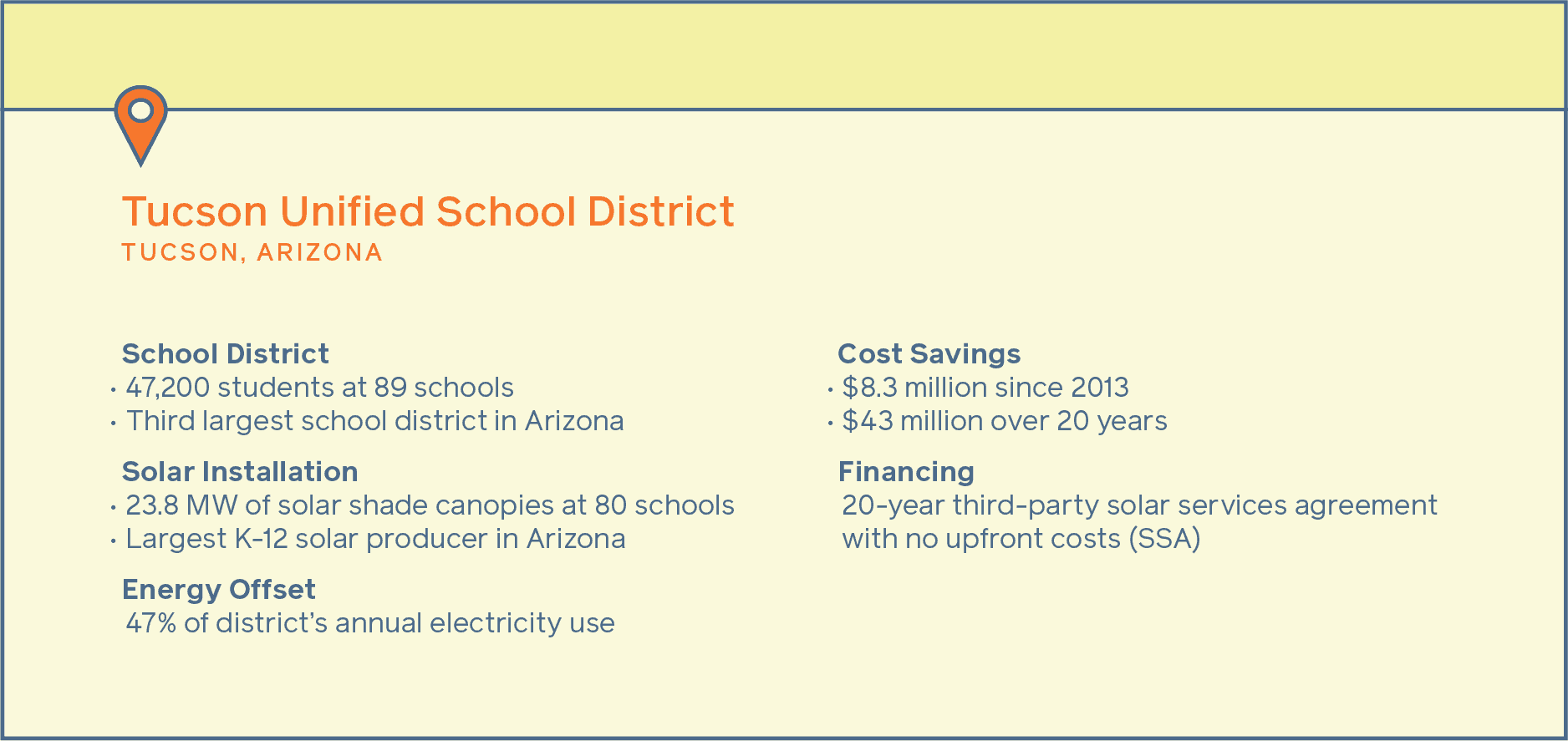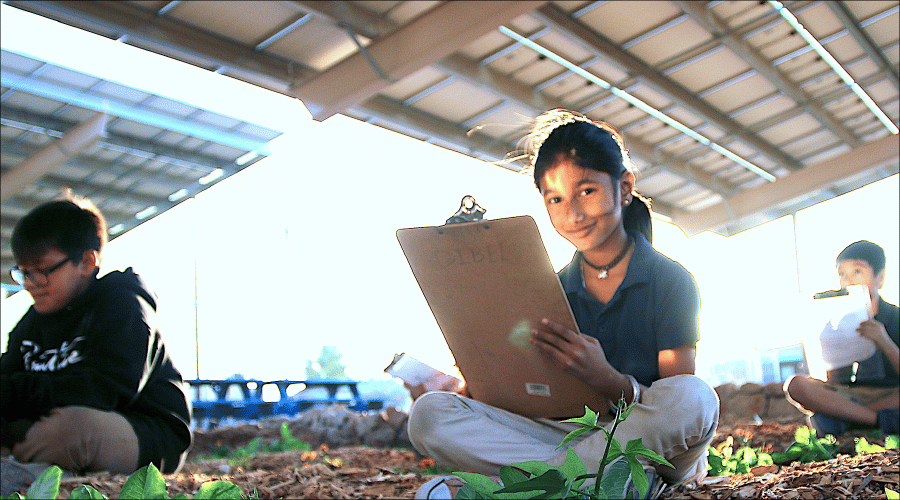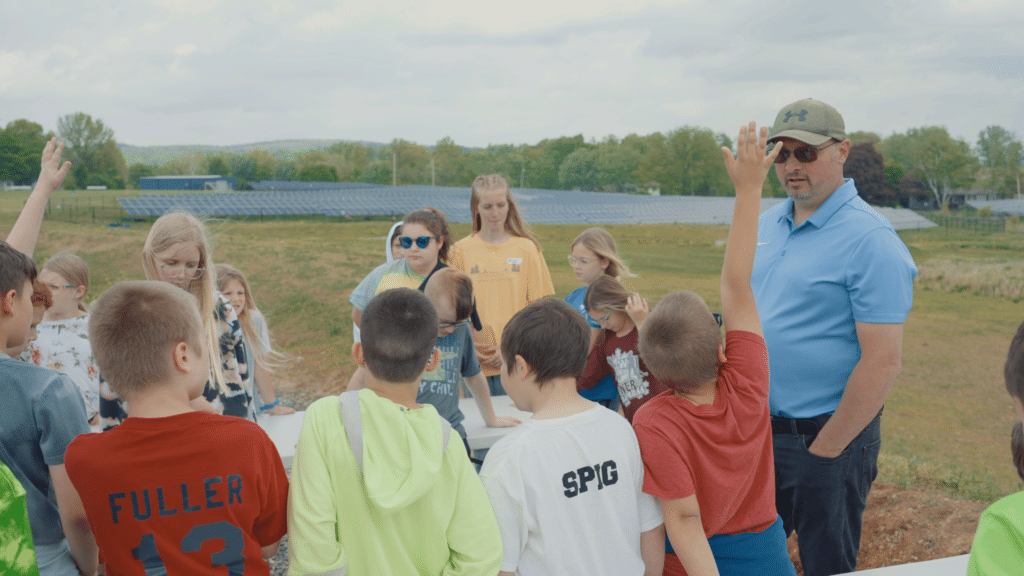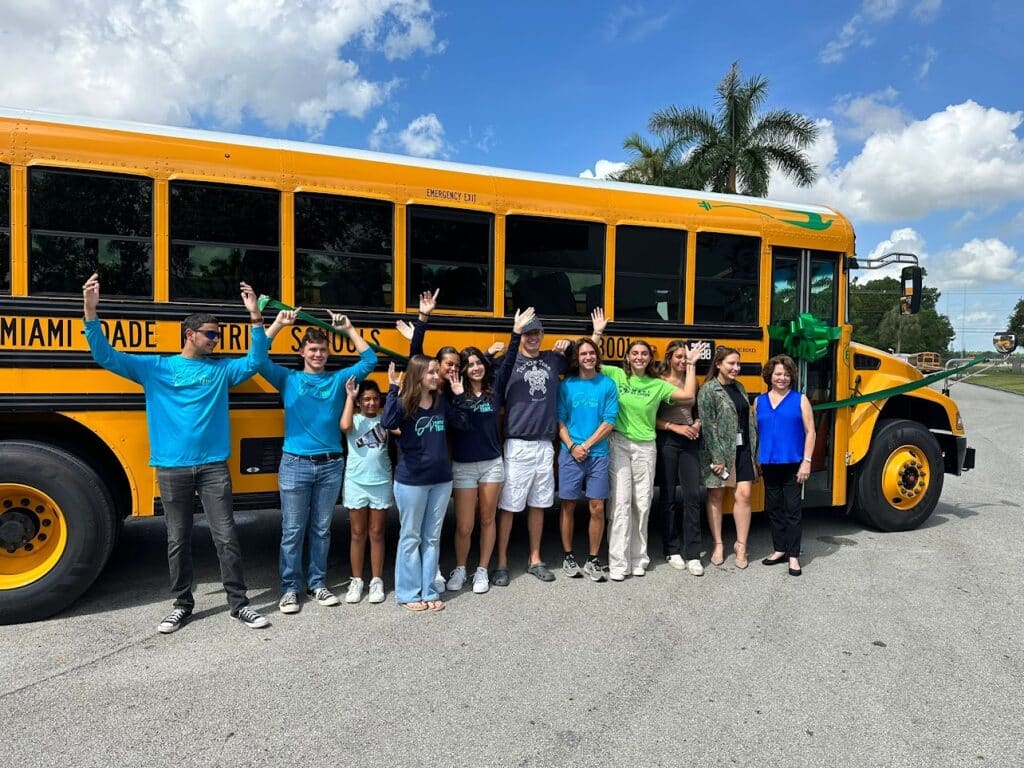This case study was originally published in the 4th edition of Brighter Future: A Study on Solar in U.S. Schools (2022).
Several years ago, a group of students in Barbara Hurley’s environmental science class at Rincon High School in Tucson Unified School District (TUSD) began exploring real-world questions in their school’s agrivoltaics garden. One question they wanted to answer: could they successfully plant carrots, usually grown in cooler temperatures, in the heat of late summer when shaded under a solar panel canopy? The students’ curiosity and hard work paid off when they harvested a healthy crop of carrots in late fall and proved that the cooler, wetter microclimate created under the solar panels could change the seasonality of plant lifecycles.

Ms. Hurley’s students have a unique opportunity to conduct college-level research and make scientific discoveries about agrivoltaics, thanks to a collaboration between TUSD and the University of Arizona’s (UA) Community and School Garden Workshop. This partnership began in 2009 when UA was seeking internship opportunities to expand its agrivoltaics research. At the same time, TUSD was looking for ways to enrich student learning. The partnership proved to be an ideal pairing and a win-win for the university and the school district.
“Every year, I get students with a range of abilities, including those who think they can’t do science,” says Ms. Hurley. “By the end of the year, most students realize that they can and are way better at it than they thought they were.”
In Ms. Hurley’s class, students can often be found outdoors engaging in hands-on, real-world science and making important discoveries about the world they live in. Students pick the research topic, design and conduct the project, document their observations, and share their findings in a poster presentation. In addition to studying changes in seasonality, students have measured and compared temperatures of the garden’s solar arrays versus those over the parking lot, how the shape of solar panels can affect what you plant and where, and whether rainwater collected from solar panels is better for watering plants.
TUSD is home to two agrivoltaics gardens, one on the shared campus of Rincon High School and University High School and the second at Manzo Elementary School. Both gardens are making science accessible to students, giving them opportunities to engage in outdoor learning and see answers come to life through hands-on research.
“Many aspects of our agrivoltaics work at UA fall in that sweet spot of being interesting and something that students can help us conduct,” explained Greg Barron-Gafford, associate director of the UA Community and School Garden Workshop.
“This collaboration allows us to crowdsource our science with an able, creative, and excited team of kids!”
At Manzo Elementary School, students use the agrivoltaics garden as an outdoor classroom where they are encouraged to think like scientists – to make observations, ask questions, and test things. On any given day, you can find students out in the garden taking measurements and tracking daily patterns for things such as soil moisture, temperature, relative humidity, incoming light, and wind speed. The young student scientists share their enthusiasm by leading tours of the school’s agrivolatics garden and showing the adults how to take measurements.
“Gardens have a way of developing how a student feels and sees themself,” said Greg Barron-Gafford. “Working in the garden feeds their natural curiosity and helps them develop self-confidence and an appreciation for their abilities to engage in science.”
















